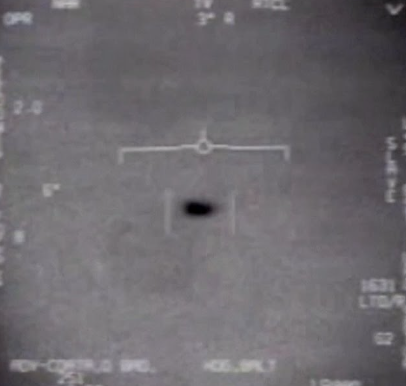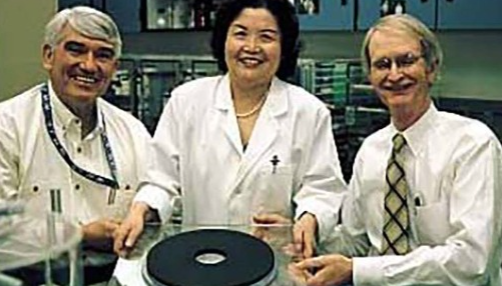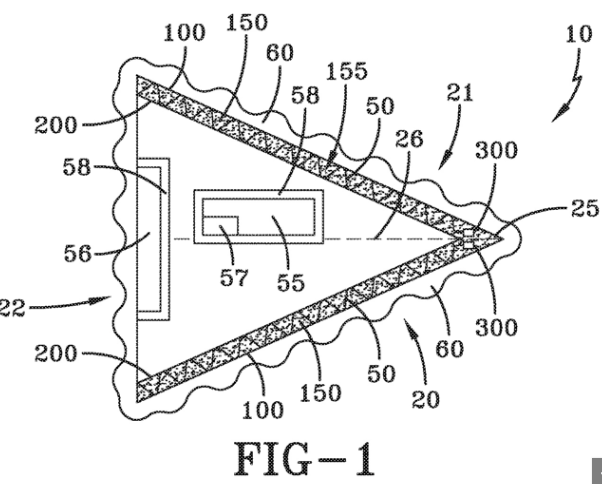For more than a century, scientists have been working to achieve the impossible…
Prove Isaac Newton wrong.
As you no doubt know, Newton’s laws are fundamental scientific principles.
They are bedrock — indisputable.
But that doesn’t mean they — or gravity itself — can’t be overcome.
And in fact, there is a tremendous incentive for that to happen.
You see, the chief obstacle to space exploration is the fuel paradox.
Indeed, Newton’s laws dictate that if you want to push an aircraft or rocket, you must expel mass in the opposite direction.
That’s fine if you're just going into orbit, or even the moon, and coming back. However, if you want to go farther, you need more fuel — but hauling that extra fuel into space requires still more fuel.
Hence the obsession with overcoming Newton’s laws.
A non-Newtonian propulsion system — one that doesn’t require rockets and fuel — would open up the entire universe to exploration.
Consider this…
From Here to Eternity
The fastest human-made object is NASA’s Parker Solar Probe, which reached speeds as fast as 430,000 mph. Well, it would take the Parker Solar Probe 6,800 years to reach Alpha Centauri, the next closest star to our solar system.
However, an anti-gravity spacecraft, powered by a nuclear reactor — as opposed to tons of rocket fuel — could reach Alpha Centauri in just six years. In fact, it could even reach the center of the galaxy — some 26,000 light years away — in just two decades.
And that’s just at a rate of 1 gravity — which translates to 9.80665 meters (32 feet) per second squared. If we were able to advance beyond that speed, such trips would be even shorter.
If that sounds unlikely, consider that eye witness testimony and video evidence captured right here on Earth already claims to show craft flying at more than 50 times that speed.
Here, I’m referring to the now-famous 2004 “Nimitz incident” in which the aircraft carrier’s crew and fighter pilots observed a Tic Tac-shaped craft traveling at speeds of 50–5,000 gravities without producing a sonic boom or even so much as a vapor trail.

At 50 gravities, the center of the galaxy would be just six months away. And at 5,000 gravities, it’d be a scant 2.5-day journey.
So, yeah, anti-gravity technology would be a game-changer. It’d change the entire course of humanity.
And that’s exactly why scientists and governments around the world have been working for decades behind the scenes to see if it can be accomplished.
How Far We’ve Come
In 1921, German physicist Theodor Kaluza published the Kaluza-Klein theory, which attempted to blend gravity and electromagnetism and introduced the concept of a fifth dimension outside of time and space.
Albert Einstein himself took up work on the Kaluza-Klein theory at Princeton throughout the 1930s, but never managed to produce his long sought-after unified field theory.
Nevertheless, in the decades since, a ceaseless procession of scientists and physicists have picked up where Kaluza and Einstein left off.
In 1981, a physicist at Boeing claimed anti-gravity effects could be achieved through something called dynamic nuclear polarization — an approach that is still currently being pursued by New Jersey-based R&D firm Falcon Space.
The Best Free Investment You’ll Ever Make
Join Wealth Daily today for FREE. We’ll keep you on top of all the hottest investment ideas before they hit Wall Street. Become a member today, and get our latest free report: “Guardians of Growth: 3 Defense Contractors for Savvy Investors.”
It contains full details on the three companies that are set to provide explosive growth in the defense sector over the next Decade.
After getting your report, you’ll begin receiving the Wealth Daily e-Letter, delivered to your inbox daily.
In the 1990s, Russian physicist Yevgeny Podkletnov claimed to have blocked the force of gravity using superconductors. Apparently, he was able to levitate a superconducting disc above a magnet, reducing its weight by spinning it at several thousand revolutions per minute.
In 2001, Chinese-American physicist Ning Li claimed to have gone even further by using high-temperature superconducting disc to levitate a bowling ball.

Her company, AC Gravity LLC, received a $450,000 grant from the Department of Defense to continue her anti-gravity research.
The grant period ended in 2002, but no results from this research were ever made public. In 2003, though, Li presented related findings at a MITRE conference titled “Measurability of AC Gravity Fields,” alongside a Redstone Arsenal official from the U.S. Army Aviation and Missile Command.
Li stopped publishing or discussing her research findings after gaining top-secret security clearance and rejecting overtures from Beijing to move her research to China.
Tragically, in 2014, she was struck by a car and suffered serious brain injuries that ultimately led to her death in 2021. However, her company is still active and even FOIA requests have failed to bring its research to light.
And maybe most interestingly…
The Navy’s Anti-Gravity Patent
In 2016, the U.S. Patent and Trademark Office approved an application titled “Craft Using an Inertial Mass Reduction Device.”

It was filed by the Department of the Navy with Salvatore Pais listed as the inventor, and it describes anti-gravity technology that’s currently in operation. The patent also describes a hybrid aerospace-undersea craft (HAUC) capable of extreme speeds in air, water, and space.
The patent office denied the application twice for insufficient detail for replication, before finally approving it after the Navy’s chief technology officer testified that the invention was feasible and that America was facing competition from China.
And that’s just the tip of the iceberg.
It’s just a tiny glimpse of the anti-gravity research that’s been conducted for more than a century now. So much more is hidden beneath layers of governmental secrecy.
Some of the more extreme claims we’ve heard over the past few years even suggest the Pentagon has retrieved and reverse engineered alien technology — bridging whatever gaps lay between Einstein and Ning Li.
As Ben Rich, the former head of the Skunk Works, said in a 1993 speech to UCLA engineering alumni…
“We already have the means to travel among the stars, but these technologies are locked up in black projects and it would take an act of God to ever get them out to benefit humanity… Anything you can imagine, we already know how to do it."
"We have things out in the desert that are 50 years beyond what you can comprehend,” Rich would go on to say two years later, just before he died. “If you’ve seen it on Star Wars or Star Trek we’ve been there, done that, or decided it wasn’t worth the effort”
So I can’t say for sure that the United States has anti-gravity technology.
But I can say for sure that we’ve been working on it for a very long time and the government doesn’t talk about it — at all.
And if it is in fact real, then this company right here is the one that has access to it.
Fight on,

Jason Simpkins
Simpkins is the founder and editor of Secret Stock Files, an investment service that focuses on companies with assets — tangible resources and products that can hold and appreciate in value. He covers mining companies, energy companies, defense contractors, dividend payers, commodities, staples, legacies and more… He also serves as editor of The Crow’s Nest where he analyzes investments beyond the scope of the defense sector.
For more on Jason, check out his editor's page.
Be sure to visit our Angel Investment Research channel on YouTube and tune into Jason's podcasts.
Want to hear more from Jason? Sign up to receive emails directly from him ranging from market commentaries to opportunities that he has his eye on.




